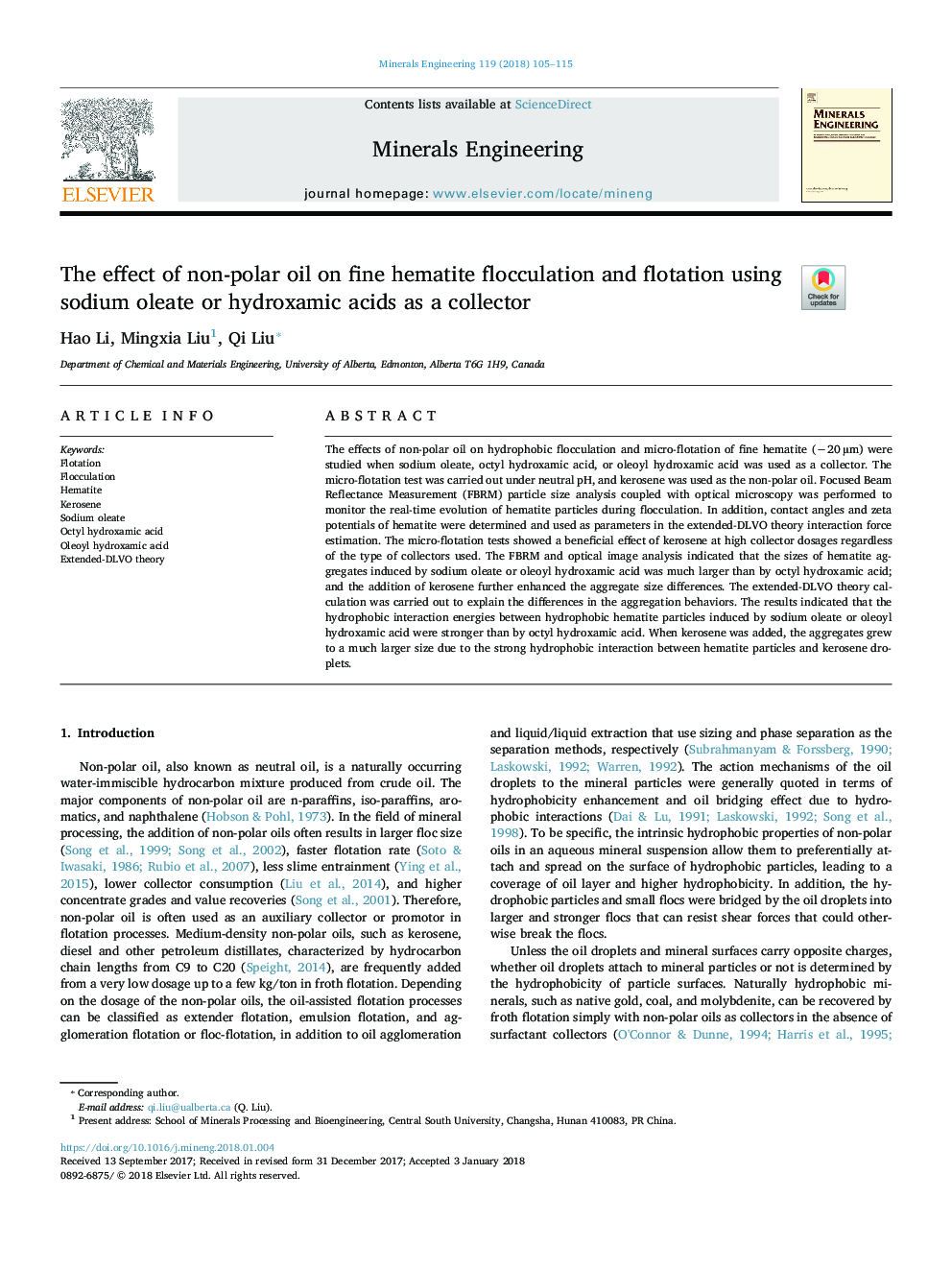| Article ID | Journal | Published Year | Pages | File Type |
|---|---|---|---|---|
| 6672503 | Minerals Engineering | 2018 | 11 Pages |
Abstract
The effects of non-polar oil on hydrophobic flocculation and micro-flotation of fine hematite (â20â¯Âµm) were studied when sodium oleate, octyl hydroxamic acid, or oleoyl hydroxamic acid was used as a collector. The micro-flotation test was carried out under neutral pH, and kerosene was used as the non-polar oil. Focused Beam Reflectance Measurement (FBRM) particle size analysis coupled with optical microscopy was performed to monitor the real-time evolution of hematite particles during flocculation. In addition, contact angles and zeta potentials of hematite were determined and used as parameters in the extended-DLVO theory interaction force estimation. The micro-flotation tests showed a beneficial effect of kerosene at high collector dosages regardless of the type of collectors used. The FBRM and optical image analysis indicated that the sizes of hematite aggregates induced by sodium oleate or oleoyl hydroxamic acid was much larger than by octyl hydroxamic acid; and the addition of kerosene further enhanced the aggregate size differences. The extended-DLVO theory calculation was carried out to explain the differences in the aggregation behaviors. The results indicated that the hydrophobic interaction energies between hydrophobic hematite particles induced by sodium oleate or oleoyl hydroxamic acid were stronger than by octyl hydroxamic acid. When kerosene was added, the aggregates grew to a much larger size due to the strong hydrophobic interaction between hematite particles and kerosene droplets.
Related Topics
Physical Sciences and Engineering
Chemical Engineering
Chemical Engineering (General)
Authors
Hao Li, Mingxia Liu, Qi Liu,
